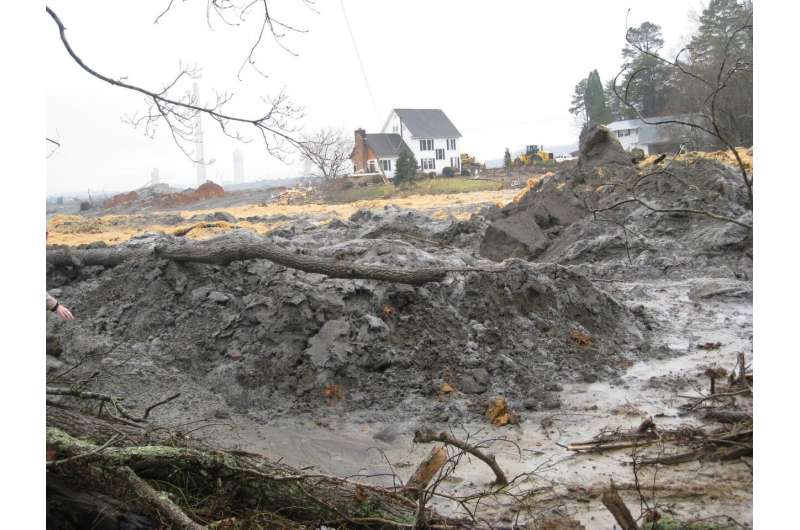Lead isotopes a new tool for tracking coal ash

Inhaling dust that contains fly ash particles from coal combustion has been linked to lung and heart disease, cancer, nervous system disorders and other ill effects.
But tracking the presence of coal ash in dust has been a challenge for scientists.
Until now.
Researchers at Duke University and the University of North Carolina Chapel Hill have developed a new forensic tracer that uses lead isotopes to detect coal fly ash in dust and other solids, including soil and sediments. Fly ash is a fine particulate produced by burning pulverized coal.
Tests show that the tracer can distinguish between the chemical signature of lead that comes from coal ash and lead that comes from other major human or natural sources, including legacy contamination from leaded gasoline and lead paint.
"Lead adds to our forensic toolbox and gives us a powerful new method for tracking fly ash contamination in the environment," said Avner Vengosh, professor of geochemistry and water quality at Duke's Nicholas School of the Environment.
The tracer broadens scientists' ability to assess and monitor exposure risks of people who live or work near coal ash ponds and landfills or near sites where coal ash is being spread on soil as fill or reused for other purposes.
"Many clean-up workers and local residents who were exposed to fly ash dust containing high levels of lead, arsenic and other contaminants following the massive TVA coal ash spill in eastern Tennessee in 2008 have experienced debilitating health effects," Vengosh said. "Communities near coal ash storage facilities or sites where coal ash has been mixed with soil as fill are now worried they too might be exposed to harmful contaminants."
"These types of risks are only going to increase under the EPA's pending proposal to relax restrictions on spreading coal ash for 'beneficial use' or storing it in unlined pits and landfills," Vengosh said.
"Our hope is that this new tracer, which augments the suite of isotopic tracers we already have developed for tracking coal ash contamination in aquatic environments, will help us provide greater protection to communities at risk," he said.
Vengosh and his colleagues published their peer-reviewed study Oct. 16 in Environmental Science & Technology Letters. They analyzed 45 fly ash samples collected from 12 U.S. coal-fired power plants between 2004 and 2013. Sixteen samples of the fly ash originated from Appalachian coal, 22 came from coal in the Illinois Basin, and seven came from the Powder River Basin.
It is the first study to provide a systematic analysis of lead isotopes in coal fly ash from all three major U.S. coal-producing basins.
As a proof-of-concept experiment, the researchers used the new lead isotope tracer to analyze sediments from Sutton Lake in eastern North Carolina. The lake served as an impoundment for a coal-fired power plant from the 1970s until the plant was replaced with a natural gas-powered plant in 2013 and a study earlier this year by Vengosh's team showed that it was the site of multiple unreported coal ash spills over the years. Sutton Lake is located on the Cape Fear River about 11 miles upstream from the city of Wilmington. The researchers also tested sediment samples from nearby Lake Waccamaw, which has never been used as a coal ash impoundment.
"The tests showed the Sutton Lake sediments had a lead isotopic fingerprint similar to that of fly ash from Appalachian Basin coal and quite different from those of sediments in unaffected Lake Waccamaw," said Zhen Wang, a doctoral student in Vengosh's lab who was lead author on the study. "This was consistent with the results of the previous study, confirming our earlier findings and validating the applicability of lead isotopes as a new tool for tracking coal fly ask in the environment."
More information: Zhen Wang et al, Lead Isotopes as a New Tracer for Detecting Coal Fly Ash in the Environment, Environmental Science & Technology Letters (2019). DOI: 10.1021/acs.estlett.9b00512
Journal information: Environmental Science & Technology Letters
Provided by Duke University

















